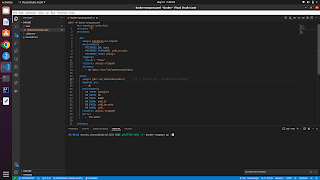Given a binary tree, print the tree in level wise order. For printing a node with data N, you need to follow the exact format - N:L:x,R:y wherer, N is data of any node present in the binary tree. x and y are the values of left and right child of node N. Print -1. if any child is null. There is no space in between. You need to print all nodes in the level order form in different lines. Input format : Elements in level order form (separated by space) (If any node does not have left or right child, take -1 in its place) Sample Input : 8 3 10 1 6 -1 14 -1 -1 4 7 13 -1 -1 -1 -1 -1 -1 -1 Sample Output : 8:L:3,R:10 3:L:1,R:6 10:L:-1,R:14 1:L:-1,R:-1 6:L:4,R:7 14:L:13,R:-1 4:L:-1,R:-1 7:L:-1,R:-1 13:L:-1,R:-1

